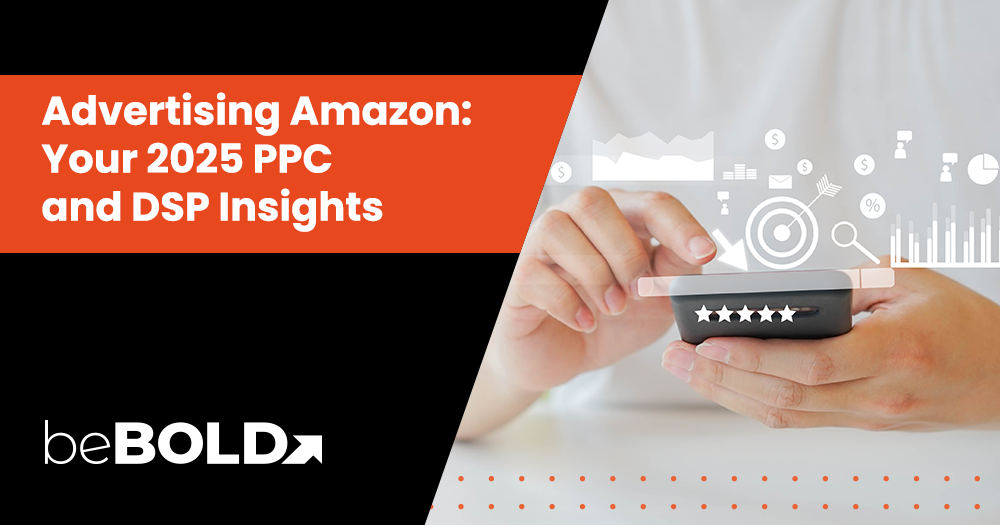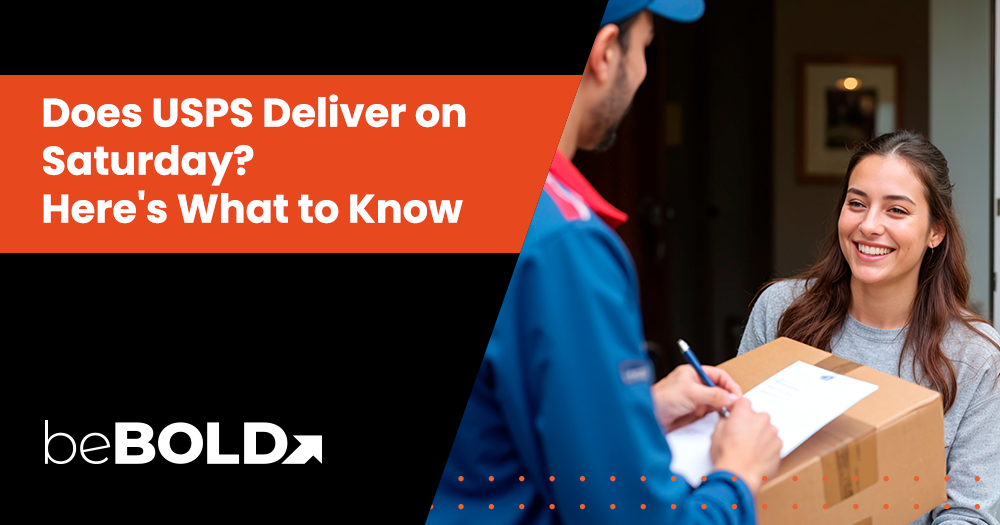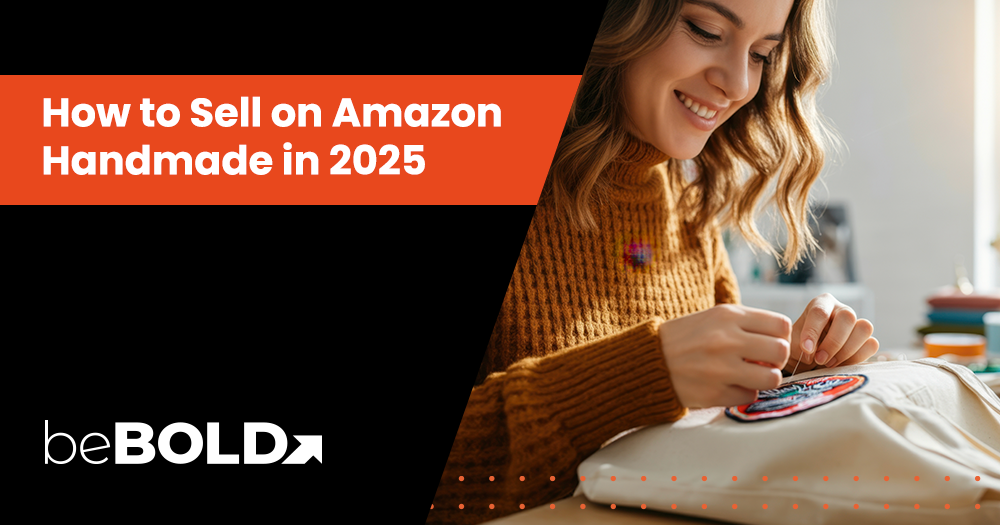Key Highlights
- Match your ad to your goal—Products for action, Brands for visibility, Display for retention, and DSP for market expansion.
- Turn ad spend into sales with proven targeting tactics, keyword strategies, and audience segmentation methods.
- Set up and launch Amazon ad campaigns quickly with clear goals, ad types, targeting, and budget—all in one streamlined workflow.
- Scale smarter with structured campaigns using product-based, branded, and category-focused segmentation.
- Boost conversions with better creatives—from high-impact videos to optimized A+ content.
- Avoid costly ad mistakes like poor bidding, irrelevant targeting, and neglected campaign tracking.
- Use automation and AI tools to manage bidding, harvest keywords, and forecast performance without manual effort.
- Track what matters—ACoS, TACoS, ROAS, CTR—read your data and use it to optimize.
- Use DSP to re-engage high-intent audiences beyond Amazon.
- Partner with experts like beBOLD to run high-impact campaigns, eliminate waste, and scale profitably.
In 2025, selling on Amazon without advertising means falling behind. With fierce competition and limited organic reach, paid ads are essential. This guide covers everything you need—PPC, DSP, targeting, budgeting, and strategy. Feeling stretched? beBold Digital helps eCommerce brands scale faster with data-driven, done-for-you Amazon advertising that delivers real results.
What Are Amazon Ads?

Amazon Ads are pay-per-click (PPC) sponsored posts that boost Amazon product visibility directly on Amazon. In today’s crowded e-commerce space, they help brands:
- Reach high-intent shoppers
- Drive traffic and conversions
- Build brand recognition
They’re not just useful—they’re essential for growth on Amazon.
Product vs. Brand vs. Display Ads
|
Ad Type |
Purpose |
Where It Shows |
Best For |
|
Sponsored Product Ads |
Promote specific items to shoppers actively searching related keywords. |
Search results, product pages |
Boosting visibility and conversions on SKUs |
|
Sponsored Brand Ads |
Boost brand awareness with banners linking to your Amazon Store. |
Top of search results, brand pages |
Storytelling, brand recognition |
|
Sponsored Display Ads |
Retarget or reach shoppers based on behavior and interests. |
On Amazon and third-party websites |
Retargeting, off-Amazon visibility |
Types of Amazon Ads


1. Sponsored Product Ads
These ads promote individual listings in search results and product pages, which is ideal for increasing visibility and conversions on specific items.
2. Sponsored Brand Ads
Also known as banner or video ads, they highlight your brand with a custom message, logo, and multiple product links—perfect for brand storytelling.
3. Sponsored Display Ads
These ads reach shoppers based on behavior and demographics. Use them to retarget viewers who didn’t buy or to expand your reach beyond Amazon.
How Does Amazon Marketing Services (AMS) Fit In?
AMS is the platform behind all ad types. It offers data-driven tools and campaign controls, helping Amazon sellers optimize spend, target audiences more effectively, and drive long-term growth.
Top Reasons to Advertise on Amazon

Think Amazon Ads are just about product visibility? Think again. They connect your brand with people who are already ready to buy. Let’s break down why advertising on Amazon is a game-changer:
1. Access to high-intent shoppers
Amazon isn’t just another ad platform—it’s where Amazon shoppers come to buy. With millions of Prime members and high purchase intent, your ads reach shoppers already in the mood to spend. That’s a significant edge when you're looking to boost conversions.
2. Powerful targeting options
Amazon’s targeting tools let you zero in on who you want to reach—based on keywords, shopper behavior, interests, and more. Whether it’s auto-targeted Sponsored Products or behavior-driven Sponsored Displays, you’re always speaking to the right crowd and focusing on best seller items.
3. Pay-per-click model efficiency
You only pay when someone clicks. That’s the beauty of Amazon’s PPC model—it’s efficient, measurable, and uses your budget better. Plus, you get real-time data to optimize your campaigns fast.
4. Real-time performance feedback
Every click, impression, and dollar spent is tracked. Amazon’s reporting tools, including Amazon Reports, Amazon QuickSight, and third-party analytics tools like DataHawk, help you monitor ad performance and tweak your strategy on the fly for better results.
5. Brand-building opportunities with Sponsored Brands & DSP
Sponsored Brands help you showcase your logo, tagline, and top products in one clean ad format. And with DSP, you can expand beyond Amazon to build a brand presence across the web and drive long-term customer trust.
How Amazon Advertising Works?

Amazon Advertising is a performance-driven tool that helps sellers reach high-intent shoppers through targeted ads. Here's a breakdown of how it works, from targeting to ad placement.
1. Keyword and ASIN targeting explained
With Amazon Ads, you can target based on relevant keywords or ASINs (Amazon Standard Identification Numbers). Keyword targeting ensures your ads appear for searches directly related to your products, while ASIN targeting helps you compete with similar products on the platform.
2. Auction-based ad pricing model
Amazon runs ad placements through an auction. You bid on keywords, and the highest bidder usually wins—but ad relevance, quality, and expected engagement also affect who gets the spot.
3. Campaign creation workflow
Creating a campaign is straightforward: choose your goal (like visibility or brand awareness), select the ad type—Sponsored Products, Brands, or Displays—then set targeting, budget, and duration. Amazon handles delivery.
4. Where ads appear on Amazon (search, product pages, etc.)
Amazon ads appear across multiple placements. Sponsored Products show in search results and product pages. Sponsored Brands often display as banners atop search results, while Sponsored Display ads reach audiences both on Amazon and external sites—ideal for retargeting or spotlighting individual products.
5. Ad Approval & Compliance
All ads must meet Amazon’s policies and guidelines for approval. This ensures the content is accurate, legal, and aligned with Amazon’s customer-first approach. Ads are reviewed before going live to comply with the platform's standards.
Getting Started with Amazon Ads

Embarking on your Amazon Advertising journey involves a few crucial steps. Let's unpack each one of them.
1. Signing up via Amazon Seller Central / Vendor Central

To get started with Amazon Advertising, log in to either Seller Central or your Amazon account, depending on whether you're a third-party or first-party seller.
- Third-party sellers need to sign up for Seller Central, which includes their professional selling account, while first-party sellers need an invitation to Vendor Central.
- Each platform has pricing options tailored to your online business model, from pay-as-you-go plans to the Pro version for larger sellers.
- Once logged in, you're ready to set up your ad campaigns.
2. Overview of Campaign Manager
Campaign Manager is your hub for creating, managing, and optimizing Amazon ads. Set budgets, define bids, and track performance metrics to align campaigns with business goals.
Targeting Options:
- Automatic Targeting: Amazon selects relevant keywords or ASINs—ideal for beginners.
- Manual Targeting: You choose keywords or ASINs—offers more control but needs deeper audience insight.
3. Budgeting by Brand Stage
Align your ad budget with your brand’s stage. New brands should invest more to gain visibility and customers. Established brands can spend less, focusing on efficiency and performance. Prioritize strategic spending based on results.
4. Common pitfalls for beginners and how to avoid them
One of the biggest pitfalls is not tracking campaign performance regularly.
- Without proper monitoring, you might waste your budget on underperforming ads.
- Avoid this by setting clear goals, reviewing key metrics (like ACoS), and making necessary adjustments.
- Also, don't spread your budget too thin—focus on your best-performing keywords.
5. When to consider hiring an agency
If you find yourself overwhelmed by campaign complexity or lack the time to manage ads effectively, consider hiring an agency.
Agencies like beBOLD Digital can bring expertise in optimization and strategy, helping you achieve better results and save time.
Amazon Advertising Strategy Framework
A strong Amazon Advertising strategy aligns with your business goals and promotes your product through targeted campaigns optimized for impact and profitability. Here's how:
1. Aligning strategy to business goals:
A successful Amazon Advertising strategy must be aligned with your broader business goals. Consider what you want to achieve with your advertising efforts:
- Profitability: Focus on ROI, ensuring that ad spend generates more revenue than it costs. Key metrics like ACoS (Advertising Cost of Sale) can help track profitability.
- Brand awareness: If your goal is to increase brand visibility, consider using Sponsored Brands and Display ads to target customers who have not yet interacted with your products.
- Market share: To expand your presence in a competitive market, use aggressive ad targeting, especially on high-traffic product categories or against competitors' products.
2. Breaking down campaigns by:
- Product Line: To improve relevance, tailor your campaigns to specific product lines and niches. For example, a campaign targeting a new product line will need strategies different from those for promoting a long-established product.
- Targeting Type:
- Branded: Targeting keywords with your brand name. This is effective when you want to protect your market share and drive sales directly linked to your brand.
- Competitor: Targeting keywords related to your competitor’s brand. This approach can help you capture market share from competitors.
- Category: Targeting keywords tied to a broader product category. This helps you reach a wider audience within your product niche.
- Auto: This is Amazon's automatic targeting, where Amazon decides the keywords based on the product’s relevance and performance.
- Ad Type:
- Sponsored Product: These are ads for individual products appearing in search results or product pages.
- Sponsored Brand: Ads that promote a brand or a set of products, typically appearing as banner ads at the top of search results.
- Display: Ads that show on Amazon's site and third-party websites, designed to reach customers based on behavior and interests.
3. Branded vs Non-Branded Strategy
Choosing between branded and non-branded strategies depends on your goals—defending market share or expanding your reach to new customers.
|
Strategy Type |
Branded |
Non-Branded |
|
Focus |
Targeting your brand name, product names, or trademarked terms. |
Targeting broader, category-related keywords or competitors’ names. |
|
Target Audience |
Customers already familiar with your brand or products. |
New customers who may not know your brand yet. |
|
Goal |
Defend market share, ensure visibility for existing customers, and protect against competitors. |
Expand customer base and grow awareness outside of your current audience. |
|
Key Metrics |
ACoS (Advertising Cost of Sale), conversion rates. |
Click-through rate (CTR), impressions, cost per click (CPC). |
|
Use Case |
Perfect for building loyalty, repeat sales, and brand consistency. |
Great for capturing new prospects, increasing market penetration, and driving broad visibility. |
Advanced Campaign Structuring Techniques

Advanced strategies can significantly elevate your campaigns as you become more experienced with Amazon Advertising. Here's how you can optimize for better control and performance:
1. Using mirrored campaigns for control across match types
Create mirrored campaigns for different match types (broad, phrase, exact) to maintain control over your targeting strategy. This allows you to test and optimize keywords across varying levels of specificity while improving overall campaign management.
2. Branded vs. non-branded keyword segmentation
Segment your campaigns into branded and non-branded keywords. Branded keywords tend to be highly converting but are more competitive, while non-branded keywords can help expand your reach and attract new customers.
3. Campaign naming conventions and organization
Establish clear and consistent naming conventions for your campaigns and ad groups. This practice makes it easier to manage, track, and analyze performance and ensures you maintain organized structures across your Amazon Advertising portfolio.
4. Audience-based targeting best practices
Leverage audience-based targeting to refine your approach. Use Amazon’s audience insights to target customers based on behaviors, interests, and demographics for more relevant ad placement, driving increased conversions.
Amazon DSP (Demand-Side Platform)

Amazon DSP opens up advanced advertising opportunities, extending your reach beyond Amazon’s platform.
Leveraging precise targeting and broad visibility complements your existing strategies to effectively engage customers throughout their buying journey.
What is Amazon DSP?
Amazon DSP allows advertisers to programmatically buy display, video, and audio ads across Amazon and third-party sites. It extends reach beyond Amazon’s marketplace, targeting audiences across the web.
How Does it Differ from Sponsored Ads?
Sponsored Ads target shoppers within Amazon’s platform, focusing on specific products and search intent. Meanwhile, Amazon DSP extends reach beyond Amazon with display and video ads, enabling full-funnel campaigns that engage audiences across all stages of the buying journey.
Benefits of retargeting and off-Amazon campaigns
Amazon DSP excels at retargeting shoppers who viewed your product but didn’t convert. It also powers personalized off-Amazon campaigns using detailed customer data and behavior insights from across the Amazon ecosystem.
Budget considerations for DSP
DSP campaigns require a higher budget due to their programmatic setup and broad reach. With proper investment in display and video ads, brands gain precise targeting and extended visibility—making DSP ideal for expanding beyond Amazon.
Creative Optimization for Higher Conversions
Optimized ad creatives are crucial for higher click-through rates and conversions. Use clear headlines, high-quality images, and persuasive copy. For Sponsored Brands, test variations like product combos and video content that align with your brand and audience.
Using A+ Content and Enhanced Brand Content (EBC)
Leverage A+ Content and EBC to enhance product detail pages, showcasing detailed features and benefits. This improves engagement and can lead to higher conversion rates.
Ad Creative Best Practices
- Clear headlines: Make your message straightforward and impactful.
- High-quality images: Use sharp, professional photos that showcase your product effectively.
- Persuasive copy: Craft copy that speaks directly to customer needs, highlighting benefits and calls to action.
Optimizing Video Ads for Sponsored Brands
Keep video ads concise and engaging, focusing on key selling points and ensuring your brand’s message is clear.
Creative Benchmarks for CTR / Video View Rate
Aim for a high CTR and video view rate by testing different creatives and adjusting based on what resonates best with your audience.
Amazon Attribution and Measurement Tools
Tracking key metrics is essential to optimize your Amazon ads. Here’s a breakdown of the most important ones:
Key Metrics to Track:
- ACoS (Advertising Cost of Sale): Measures how much you’re spending on ads to generate sales.
- TACoS (Total ACoS): Reflects ads' overall effectiveness, including organic sales.
- ROAS (Return on Ad Spend): Indicates how much revenue you’re earning for every dollar spent on ads.
Using Amazon Attribution to Measure External Channel Impact
Amazon Attribution helps you track how ads on external channels, such as social media and email campaigns, contribute to your sales on Amazon.
Leveraging Brand Analytics and Search Term Reports

Use Amazon Brand Analytics and the Amazon Search Term Report to gather insights into top-performing search terms and optimize your ad strategy.
How to Optimize Amazon Advertising Performance?

To optimize your Amazon Advertising efforts, follow these strategies:
- Bid and Budget Optimization Tips: Adjust bids based on product performance and budget allocation to high demand niches.
- Keyword Harvesting and Negative Keywords: Continuously identify new, high-performing keywords using tools like Google Trends while adding negative keywords to filter irrelevant traffic.
- Using Exact, Phrase, and Broad Match Strategically: Combine match types to balance reach and precision for better targeting.
- Leveraging Campaign Performance Data: Regularly analyze data to refine your campaigns and improve ROI.
- Split Testing Creatives and Landing Pages: Test different ad creatives and landing pages to identify the most effective combinations for higher conversions.
Top Ad Mistakes

While Amazon Advertising holds immense potential, it also comes with pitfalls. Here are some common mistakes advertisers make:
- Ignoring Organic Optimization: Paid ads should support, not replace, organic optimization with quality listings.
- Neglecting Keyword Research: Always research and update high-performing keywords for successful targeting.
- Chasing Broad Keywords: Focus on long-tail, specific keywords over highly competitive broad ones.
- Inefficient Bidding: Align bids with ACoS and adjust based on keyword performance.
- Inadequate Campaign Monitoring: Regularly track metrics to avoid wasted spend and missed opportunities.
Leveraging AI and Automation Tools

Alongside Amazon’s set of advertising tools, various Artificial Intelligence (AI) and automated tools can turbo-charge your advertising strategies. Let's get into the details:
AI Tools for Bid Automation and Performance Forecasting
AI tools, like automated bidding, leverage machine learning to adjust bids in real-time, improving ad auction success. Predictive analytics also helps forecast trends and budget needs.
Automating Keyword Harvesting and Campaign Rules
Automation tools can streamline keyword harvesting, campaign rule management, and bid adjustments, allowing you to focus on high-level strategy.
Beneficial for Reducing Manual Workload
By automating repetitive tasks, AI tools:
- Save time
- Improve efficiency
- Provide proactive insights
This ultimately boosts ad performance.
Should You Advertise on Amazon?
Advertising on Amazon is crucial for gaining visibility, driving sales, and improving organic ranking, especially for competitive markets requiring quality products. Balancing ad spend and sales volume ensures sustainable growth, especially for new or niche products.
Scenarios Where Advertising is Critical
Advertising is a necessity if you're introducing a new product or competing in a saturated niche.
- Imagine launching a custom coffee maker in a crowded market. Without ads, your product might get buried.
- A targeted ad campaign puts your product in front of the right eye, making the difference between success and staying invisible.
Ad Spend vs. Sales Volume Balancing Act
As a business owner, spending on ads without seeing sales is a red flag. But invest strategically.
- Balancing ad spending with sales volume is key if you're selling organic skincare.
- Adjust your budget to scale if you see a good conversion rate.
- If sales are sluggish, tweak your ads or explore more relevant keywords to boost performance without overspending.
Why Ads May Be the Only Way to Scale Initially
Starting out can feel like shouting over a crowd of louder voices.
- If you’re selling in a competitive space like tech gadgets or fashion, ads are your megaphone.
- For example, selling eco-friendly phone cases in a crowded market needs immediate visibility.
- Ads push your product into the spotlight, boosting sales to build momentum.
Role of Advertising in Organic Ranking Improvements
Think of ads as fuel for organic rankings. Running paid ads sets the stage for better organic growth.
- If promoting a new laptop sleeve through ads, you'll generate more traffic, leading to more sales.
- Amazon notices, and your product gets bumped up in organic search results.
- While paying for clicks now, you’re laying the groundwork for future success.
Struggling to Scale on Amazon? Let beBOLD Do the Heavy Lifting
Amazon Ads can be overwhelming, but they don’t have to be. Whether you're running Sponsored Products, DSP, or just getting started, beBOLD takes the guesswork out of ad performance.
We’ll analyze your current campaigns first and then give you actionable, brand-specific insights to boost results quickly. No fluff, no cookie-cutter strategies—just real support that drives growth. Ready to unlock what your ads should be doing? Let’s get started. Contact us now!
Amazon Ads Glossary
To thrive on Amazon, you need more than great products—you need to understand the platform’s core language. Here's a quick Amazon glossary of must-know terms:
|
Term |
What It Means |
Why It Matters |
|
Amazon FBA |
Amazon stores, packs, and ships your products. |
Simplifies the order fulfillment process and enables Prime. |
|
Product Listing |
Product title, images, and description. |
Impacts visibility and conversions. |
|
Conversion Rate |
% of clicks that lead to sales. |
Measures ad effectiveness. |
|
Seller Central |
Dashboard for managing your Amazon store. |
Central hub for sellers. |
|
Keywords |
Terms buyers search for. |
Drives search and ad visibility. |
|
Customer Feedback |
Ratings and customer reviews. |
Builds trust and affects ranking. |
|
Detail Page |
Where buyers land after clicking your product. |
Key to converting traffic. |
|
Amazon Merch |
Sell custom apparel printed by Amazon. |
Easy entry into print-on-demand. |
|
Buy Box |
Default “Add to Cart” offer. |
Winning it boosts sales significantly. |
|
Private Label |
Selling products under your own brand. |
Builds brand control and profit margin. |
|
Fulfillment |
The delivery process of customer orders. |
Directly affects customer satisfaction. |
|
Product Samples |
Units sent for product reviews or promotions. |
Boosts early trust and awareness. |
|
Google Trends |
A tool for tracking keyword interest. |
Useful for research and timing campaigns. |
|
Digital Products |
Sellable items like eBooks or courses. |
No inventory; high profit potential. |
|
Amazon Associates |
An affiliate program to earn from referrals. |
Adds passive revenue through content. |
Conclusion
Amazon Advertising offers a dynamic toolset to grow your visibility, boost sales, and build your brand. But success in inventory management isn’t just about launching ads—it’s about smart strategy, avoiding common mistakes, using automation wisely, and constantly optimizing based on performance data.
Whether you’re just getting started or scaling up, a thoughtful, data-driven approach can turn Amazon Advertising into a serious growth engine for your business.
Frequently Asked Questions
What are the different types of Amazon Ads?
There are three main types of Amazon Ads: Sponsored Products, which promote specific products; Sponsored Brands, which focus on promoting your brand; and the Amazon Associates Program Sponsored Display, which targets audiences based on their interests and behaviors and allows for off-Amazon advertising.
How much does Amazon PPC cost?
The cost of Amazon Pay-Per-Click (PPC) varies widely, primarily depending on your niche's ad type, targeted keywords, and competitiveness. It's a bid-based model, meaning you decide how much money you will pay each time a shopper clicks on your ad.
Is Amazon PPC worth it for small brands?
Yes! Even for small brands, Amazon PPC is a powerful tool to enhance product visibility, drive sales, and improve organic ranking. With elements of customization and control regarding budgets and bids, PPC offers an affordable and great way to reach potential customers.
How do I track ROI on Amazon Ads?
You can track Return on Investment (ROI) on Amazon ads by utilizing the key metrics provided in the campaign manager, including clicks, impressions, total spend, and sales. Metrics like Advertising Cost of Sales (ACoS) and Return On Ad Spend (ROAS) can indicate the profitability of your ads.
What’s the difference between ACoS and TACoS?
Advertising Cost of Sales (ACoS) is the percentage of ad-driven sales you spend on advertising. Total Advertising Cost of Sales (TACoS) is similar. Still, considering all your sales (ad-driven and organic), it provides a holistic view of how your ads contribute to your overall Amazon business growth.
Ready to boost your Amazon sales? Talk to our team today to avail a free ad audit with beBold Digital.







Comments